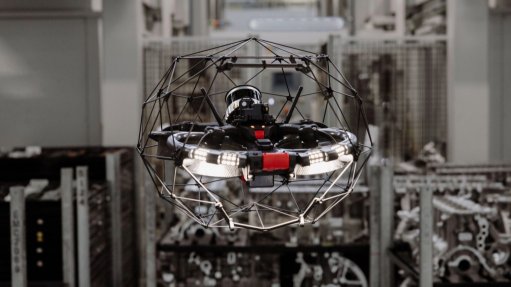Electricity generation and future prices
Living with an electricity monopoly mandated to provide basic services is always a double-edged sword. If it is well run and efficient, it can be a boon for consumers and the public in general. If it is run poorly and inefficiently, the aftershocks will hurt consumers’ pockets and eat into the tax base for a long time.
When a utility holds a monopoly over power plants, the transmission of electricity and large parts of the distribution network, consumers are pretty much held to ransom and will be at the mercy of the monopoly’s whims.
Despite Eskom’s continued woes, it has done remarkably well to provide electricity for millions of people. Its mass electrification programme started in 1994 at a low base of 34% connectivity. This increased to 81% connectivity by 2009 and it was expected there would be 100% connectivity by 2014. About 80% of the urban population has access to electricity, as does 50% to 60% of the rural population.
The positive impacts of electricity on households have been studied. The provision of electricity reduces the time spent in search of fuel or energy in rural and many periurban areas. By 2007, 49% of poor households were using electricity for cooking, compared with almost none in 1994. But having access is not the same as being able to pay for it.
Oversupply of plant capacity in the past did two things: during the pre-1994 period, over- supply led to sweetheart deals with major corporations like BHP Billiton for aluminium smelters and, as court papers have shown, these were well below current generation costs. These deals are still in place.
In the post-1994 period, cheap electricity was also the basis of universal access and provision of free basic electricity (FBE) for poor households in 2003. However, rising electricity generation costs will encumber the State’s ability to expand access and continue to sustainably provide FBE for all households. Increasing costs have major ramifications for continued access, and also lead to the degradation of income because of energy inflation.
So, where are we heading and how do we fix things?
In the short term, at least for the next five to seven years, we will suffer damnation, and consumers with different income levels will suffer differently, with the poorest being the most excluded.
There are three major reasons why costs will go up.
Firstly, electricity tariffs were never increased gradually, possibly owing to pressure from large industry users in the early days, coupled with politicians being undecided about what to do with a monopoly utility like Eskom. So, the politicians never granted Eskom the right to build more plants.
Secondly, Eskom’s energy model is based on ‘big is beautiful’, resulting in the utility seeking to build state-of-the-art power plants, such as Medupi and Kusile, where experience was short, as we had not built power plants for three decade. These new coal plants are complex, have long lead times and can be beset with construction and engineering problems, as Medupi is showing, with cost overruns now three times the original estimates.
Thirdly, energy costs are also determined by how balanced and diverse the energy sources are (we generate 90% of our electricity from coal) and the management performance of these different power plants. There is little transparency regarding day-to-day power plant performance, so we do not know how well power plants are run or whether they are always operating at full capacity.
In this scenario, we will be going in the same direction as India and other countries where the cost of electricity generation will exceed the revenue recovered from consumers. At some point, the socioeconomic impacts are too consequential for the full costs to be recovered. Somebody will still have to pay. If it is not at the front end, through metered billing, it will be through the back door – from takings out of consumers’ yearly filings to the South African Revenue.
There is already talk of some sort of top-up from the State outside the normal tariffs in order to keep Eskom going and enable it to cover its costs. The follows the National Energy Regulator of South Africa granting Eskom only an 8% tariff increase. This subsidy recipe itself is a precipice and a moral hazard, as it does not deal with two problems: how to solve the immediate power crisis, as Eskom’s reserve margins are too low to deal with any sudden blips in electricity demand, especially during the winter period, and the long-term performance issues related to having a single supplier and the risks this poses to the economy.
There is also talk of having to break up Eskom and sell parts of this monster utility (which has a grid system the size of Western Europe’s) to the private sector.
The opening of new generation from independent power producers will solve some of the problems with regard to spare capacity, but it is unlikely to make a big dent in the marginal cost of electricity in the immediate or near future. The reason is that regulated prices, rather than pure energy-only market pricing, will continue to be the norm.
More significant reforms are needed in the electricity sector, and that discussion is not yet being held. In the meantime, while Eskom struggles, a hybrid electricity generation market is emerging between public and private sources of supply. This is interesting, but it is still too early to tell what prospects it holds for the future. But suffice it to say that pure liberalisation of energy markets in developing and emerging economies has not worked and is not the norm.
Article Enquiry
Email Article
Save Article
Feedback
To advertise email advertising@creamermedia.co.za or click here
Comments
Announcements
What's On
Subscribe to improve your user experience...
Option 1 (equivalent of R125 a month):
Receive a weekly copy of Creamer Media's Engineering News & Mining Weekly magazine
(print copy for those in South Africa and e-magazine for those outside of South Africa)
Receive daily email newsletters
Access to full search results
Access archive of magazine back copies
Access to Projects in Progress
Access to ONE Research Report of your choice in PDF format
Option 2 (equivalent of R375 a month):
All benefits from Option 1
PLUS
Access to Creamer Media's Research Channel Africa for ALL Research Reports, in PDF format, on various industrial and mining sectors
including Electricity; Water; Energy Transition; Hydrogen; Roads, Rail and Ports; Coal; Gold; Platinum; Battery Metals; etc.
Already a subscriber?
Forgotten your password?
Receive weekly copy of Creamer Media's Engineering News & Mining Weekly magazine (print copy for those in South Africa and e-magazine for those outside of South Africa)
➕
Recieve daily email newsletters
➕
Access to full search results
➕
Access archive of magazine back copies
➕
Access to Projects in Progress
➕
Access to ONE Research Report of your choice in PDF format
RESEARCH CHANNEL AFRICA
R4500 (equivalent of R375 a month)
SUBSCRIBEAll benefits from Option 1
➕
Access to Creamer Media's Research Channel Africa for ALL Research Reports on various industrial and mining sectors, in PDF format, including on:
Electricity
➕
Water
➕
Energy Transition
➕
Hydrogen
➕
Roads, Rail and Ports
➕
Coal
➕
Gold
➕
Platinum
➕
Battery Metals
➕
etc.
Receive all benefits from Option 1 or Option 2 delivered to numerous people at your company
➕
Multiple User names and Passwords for simultaneous log-ins
➕
Intranet integration access to all in your organisation


















